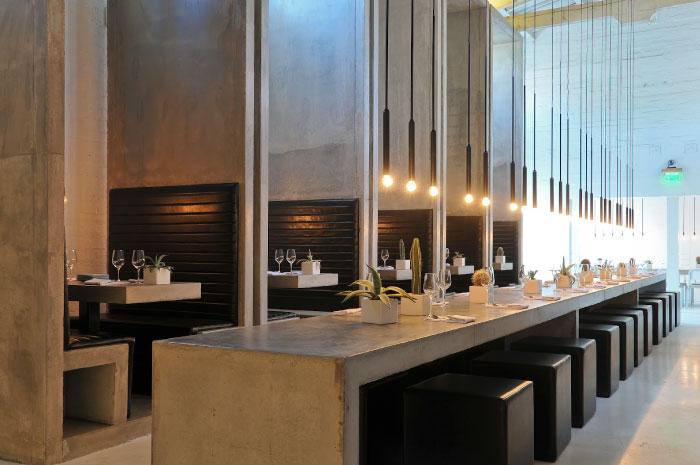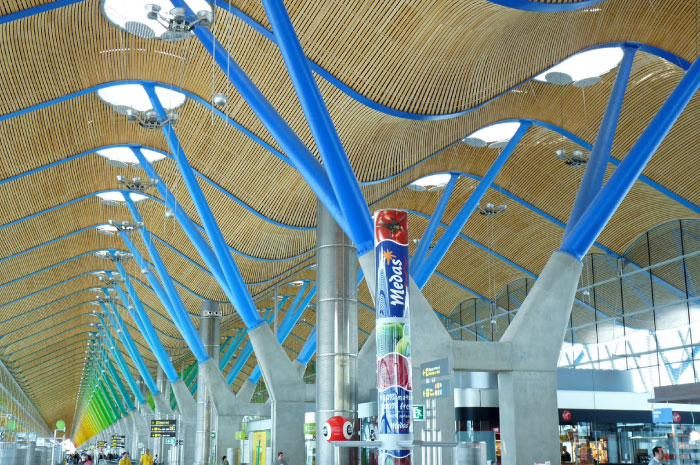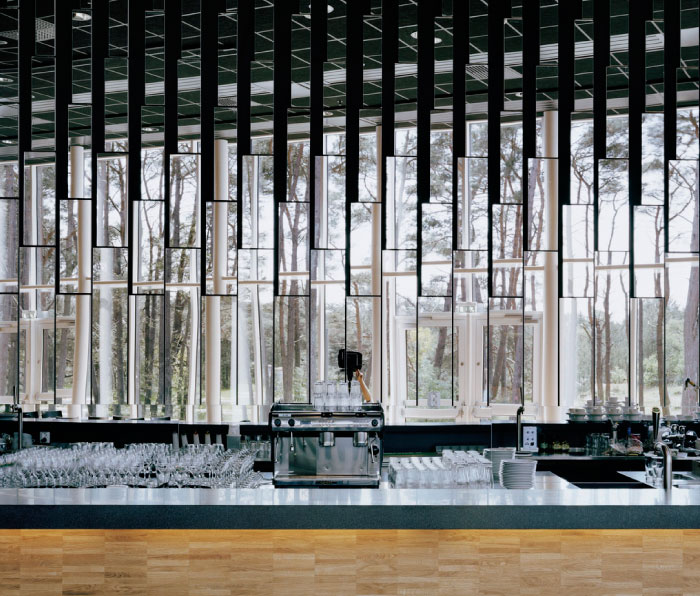Kjellgren Kaminsky Architecture created rhythm in this dance hall by repeating a pattern of mirrors.
Our last blog post introduced the principles of design with a focus on balance. This post will focus on another principle of interior design, rhythm.
Rhythm can be thought of as a pattern in movement. You can hear it in varied sounds to create music or in the steady drip of a faucet. It can also be seen; think about lines in the sidewalk and how your footsteps relate to the regular breaks. Rhythm can be seen and heard throughout nature and in our built environment through repetition, alternation and progression. These three methods of achieving rhythm can be applied to interior spaces as a way to introduce order, interest and focus, and to help lead your eye through a room.
Repetition
Repetition is the simplest way to attain rhythm and can be achieved by repeating any of the elements of design (line, colour, texture and pattern, light, and scale and proportion) or other design concepts in an organized and regular way.

The repeating wood slats on the wall of this pizza shop by Baynes & Co Designers creates a playful rhythm and draws your eye through the space.
Alternation
Alternation is used to create rhythm by alternating two or more elements in a regular pattern. The pattern may be ABCABC or ABBABB, but always repeating in the same order.

This restaurant by Soma Architects displays both repetitive rhythm, in the booths and chairs, as well as alternation which can be seen in the pendant lights that hang in groupings with an ABAAAABA rhythm.
Progression
Rhythm can also be achieved through progression. Examples are a gradation of colour or a series of objects that start small and become large in a very regular manner.

The Barajas Airport by Richard Rogers and Estudio Lamela is an excellent example of rhythm achieved through repetition and progression of colour.
In interior design, rhythm is all about repetition of design elements that help to create movement within a space. Rhythm may be applied in bold statements that make an obvious suggestion about a path of travel, or more subtly applied to move your eye about a space without you even realizing the rhythm is there.
» Want to work with a company that specializes in commercial interior design? Contact Hatch Interior Design located in Kelowna, British Columbia – Because Good Design is Good Business.
